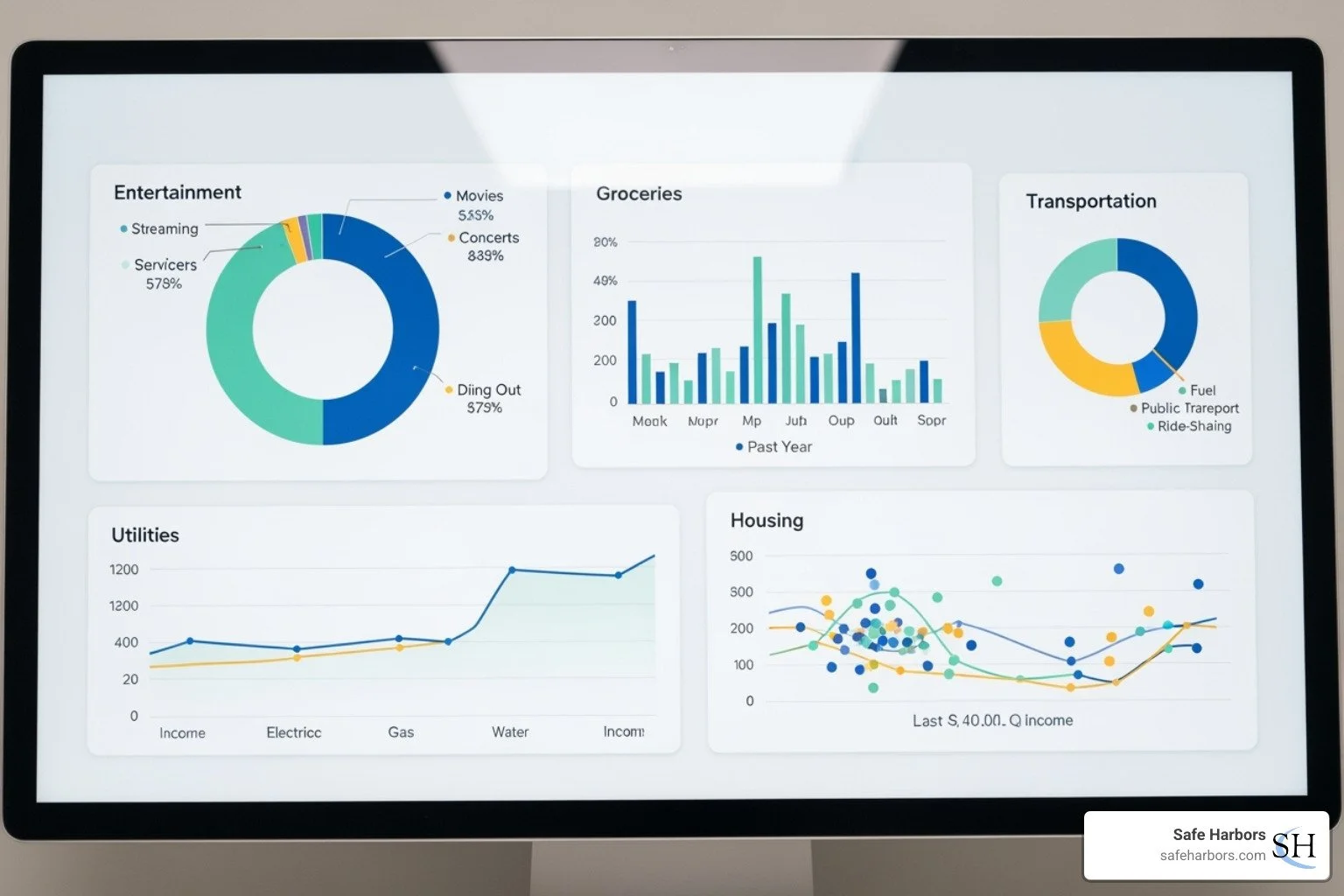After key stakeholders in a business have assessed their needs and decide that it would benefit from using a corporate travel management company, the RFP process begins. The RFP or request for proposal helps bring structure to this decision and also helps them solicit useful information from potential providers.
This can be time-consuming and costly if you don't have useful guidelines to help streamline the process.
We've provided some helpful tips involving the important stages before and after you submit an RFP to help make it an effective process.
Stage 1
Clarity is the key to having a good quality and comprehensive document; therefore, you must identify who will be involved in planning, preparing, and writing this proposal. Once the key stakeholders are determined, a needs assessment should be conducted. This is a critical component of kicking off the RFP process.
Ideally, the RFP should be developed by everyone who has a stake in this project's success. This includes representatives of these key stakeholder groups:
CEOs
CFOs
Senior Management
Procurement
Accounting
Travelers
Human Resources
Having a small selection of individuals writing, or at least contributing to writing the proposal, is vital for communicating your company's objectives and requirements clearly and thoroughly. A unique RFP written by company stakeholders will address company needs more accurately than an online template ever could.
Next, it's essential to outline the content and then, form a proposal content plan. This brings structure to the process and allows numerous people to review and influence the direction of the proposal. A content plan is also a useful quality assurance tool to ensure the inclusion of everything that should be present. While the RFP should be thorough, keep it short and straightforward. Term papers and the thesis will not separate the players from the contenders. Respect the time of the bidders.
Another thing to consider in this crucial stage of the process is who will review the RFP submissions, establish the screening process, and score the criteria. What are the determining and deciding factors you will use to choose the best-qualified participant? The committee should also decide on the budget and schedule for the project at this time.
Research Potential Vendors
While writers are preparing to draft the proposal (the next stage), others on the committee should research potential vendors so they can invite a select group to respond to the proposal. This reduces the effort required to sort through the responses and increases the odds of your company receiving more quality submissions.
These are some possible approaches to finding qualified leads:
Ask for recommendations from other organizations.
Ask for suggestions on your LinkedIn network.
Visit vendors' websites.
Conduct an Internet search to find customer reviews.
Provide a Q&A period.
Stage 2
Draft the RFP
Compile a list of questions that are specific and targeted.
Keep questions clear and direct. Clarity of questions will drive the usefulness of their answers.
Ask specific and open-ended questions. Below are a few examples:
What is the TMC's philosophical approach to travel management? This question provides insight into whether they have a transactional or strategic approach.
What is the TMC's average response time during and outside of business hours?
Is the TMC in tune with issues specific to the industry?
Is the company using automated expense? What are the top 3 items that will improve the travel program?
INFORMATION TO PROVIDE VENDORS:
Introduction: This is an overview of what you hope to achieve and why you are submitting the RFP. An example could include, "(Your Company Name here) needs the services of a TMC that should be able to manage suppliers, negotiate value-added deals, and take a strategic approach to ensuring value and duty-of-care."
Describe Your Organization: Present an overview of your organization and its operations. You may also describe the annual revenue, countries in which you operate, your travel policy, and then direct providers to your website for more information. This gives these recipients the background information needed to craft the best possible solutions to fit your company.
Define the Current Program: How have you managed business travel in the past? What challenges does your company face, and what would you like to change regarding the current program? Or, is this a new program? If your company is experiencing specific problems with a current provider, be sure to address those to see if a new provider can offer a solution.
The Scope of Work: Give detailed descriptions of your future service needs and specific details about the service you expect. List all the locations where TMCs must be able to provide service.
Budget: Include your budget for Air Travel, Lodging, and Ground Transportation.
RFP Timeline and Review Process: Describe key dates and your company's guidelines for establishing a fair competition.
Point of Contact: Preferably, list just one person who answers questions (or finds the answers).
Technology Package: Based on the information provided.
INFORMATION TO REQUEST FROM VENDORS:
Company Profile: Ask for information on the TMC's ownership, offices, and call centers. Ask how long the business has been in operation. Also, ask for current policies and when they were last updated. Do they have experience with managing accounts in your industry? Also, ask for management or key personnel bios, and get contact information.
Additional Information: Ask about the location of reservations centers, headcounts, agents' average years of industry experience, and length of time with the TMCs. You can also include questions about the TMC's suppliers, including GDSs, and about online booking adoption rates, consortia memberships, and negotiated pricing programs.
Proposed Solution: Ask them to provide an overview of how and where their company plans to provide service to your organization. Have them describe the role of the account manager who will be managing your account. They should also provide examples such as; case studies, a timeline or implementation plan, a business plan, and a Service Level Agreement.
Customer Service: Have them provide details on the makeup of their customer support team, their levels of experience, and ongoing training programs. How will they resolve and report on customer service issues?
Transaction Management: Each provider should describe the process for incorporating a central billing card with the online booking tool. Do they currently have a mobile app? Does their company offer a corporate card product? What is their process for managing unused electronic tickets? Have them explain their invoicing process. How do they describe a transaction fee?
Account Management Strategy/Implementation Strategy: A strategy should be provided for both account management and implementation that specifies core capabilities, differentiators, and what constitutes a successful relationship.
Business Continuity/Disaster Recovery: Have them describe their backup systems for data recovery. Do they have internal employee agreements to ensure the confidentiality of your data?
Duty-of-Care: What safety and security programs, services, and reporting are offered by their company to support travelers and travel management?
Price List: Have them list all fixed costs that will remain the same throughout the contract; all variable costs that will change due to volume, and all services that will be charged separately. Also, ask for a report that includes Air, Hotel, and Car spend.
Savings: Have them provide specific details surrounding yearly cost reduction opportunities. Are they willing to guarantee specified cost reduction percentages on an annual basis? Also, ask if their organization offers any incentives or rewards to retain the business of a current customer or to obtain the business of a potential new customer.
This should help guide the information you need to include in your RFP, and you can customize it to fit your company's needs. It's always best to steer clear of a massive, overly complicated RFP; be sure to cover the main elements that you require.
Also, don't worry if you forget to ask about something important. You can send clarifications to the participants or ask about it during the shortlist period.
Stage 3
Submit the RFP
You are sharing some confidential information with these vendors, so ask them to sign an NDA first, to ensure you are covered. Vendors receiving an RFP will also ask, "How many companies did you send this to?" They usually want to know what their odds are right upfront.
Once the provider has signed an NDA, email them the RFP with a schedule and all the information they need (submittal instructions and requirements) to give you a comprehensive set of answers.
Some providers may opt-out of the process at this point because they can't meet the requirements laid out in the RFP. If they intend to participate, they should opt-in by a specific date.
RFP Deadline
When defining your timeline, be mindful of the time involved in preparing a response and provide adequate time for feedback and questions.
Internal Shortlisting Period
When the committee has a number of responses to sort through, the shortlisting timeline should be both attainable and practical.
It's also essential to carry out due diligence and referencing at this stage of the process. By looking at financial records, legal documents, and speaking to at least three customers of comparable size to your business, this will ensure that the vendors do what they say they can do; and in particular, act with integrity and with the interests of the customer in mind.
Notify Providers
After the committee has shortlisted the top providers, send them an email stating that they have been selected for the next stage (decision-making). Then schedule some follow-up meetings, explaining who will be attending, and what you expect.
The vendor should come prepared for these meetings, specifically, to discuss how they will work with your organization to achieve the desired goals. This should be a focused discussion of the vendor's differentiators and value-added ideas and concepts, not a restatement of the basic services outlined in the RFP.
Vendors that are out of consideration should also be notified and commended for their efforts at this time because that is a goodwill gesture.
Stage 4
Decision-making
When people from a TMC come to the follow-up meetings, ask them to include employees who are likely to work on the account. Can you imagine working with them? Will they fit the needs and culture of your business? Does the vendor make the impression that they will go "that extra mile" for you? These factors should not be underestimated when making the final decision.
After a decision has been made, it's then presented to each of the key stakeholders, and any objections and concerns should be considered at this time.
Once this stage of the process has been completed, you should have a good idea of which provider you wish to go with and can communicate the final decision.
Finally...
As you can see, most RFPs require a significant time investment for both you and the potential suppliers. If you have a structured process, stick to a timeline, and use this checklist as a guideline, this will make the effort more expeditious and straightforward for everyone.
A well-structured RFP acts as a clear roadmap because it not only helps you get the best bid from your prospective TMC; it also helps you implement a successful contract once you've made your final decision.





